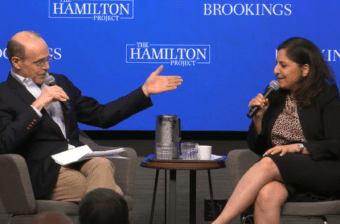The Problem
The nation’s current retirement savings regimes rely heavily on individually directed retirement savings vehicles such as defined-contribution plans and individual retirement accounts (IRAs), putting the responsibility for saving adequate retirement funds on workers. Many features of the current system make it easier for workers—and especially middle-class Americans—to spend rather than to save. In addition, the existing federal incentives for encouraging retirement savings have been of limited effectiveness.
The Proposal
Increased retirement saving by middle-class Americans could be encouraged through the creation of a Universal Retirement Savings Account that combines various types of savings accounts, allowing workers to more easily manage their retirement savings across the duration of their careers. Also, saving for retirement could be encouraged by replacing part of the individual tax subsidy for retirement savings with large tax credits directed to employers who help workers save.
Abstract
Workers rely more than ever on individually directed retirement savings vehicles, such as defined-contribution plans and IRAs, to provide the income necessary for a comfortable retirement. Yet our current system contains many features that make it easier for workers to spend than to save, and it inefficiently spends federal dollars on incentives with questionable effectiveness. This paper proposes two related reforms that build on evidence about how to increase retirement savings by increasing the benefits and decreasing the costs to employers of helping their employees save. First, this paper recommends combining all of the various types of retirement accounts into a single Universal Retirement Saving Account. Second, this paper recommends replacing part of the individual tax subsidy for retirement savings with large tax credits directed to employers who help workers save. These two reforms would generate large increases in savings for middle-class workers and, ultimately, in the well-being of retirees.




